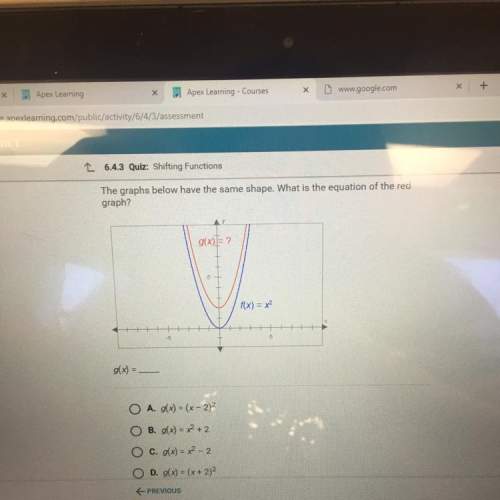
Mathematics, 10.04.2021 01:30 ava1018
The average "moviegoer" sees 8.5 movies a year. A moviegoer is defined as a person who sees at least one movie in a theater in a 12-month period. A random sample of 40 moviegoers from a large university revealed that the average number of movies seen per person was 9.6. The population standard deviation is 3.2 movies. At the 0.05 level of significance, can it be concluded that this represents a difference from the national average?

Answers: 1


Another question on Mathematics

Mathematics, 21.06.2019 16:40
How do i get my dad to stop making me gargle his pickle i want my mom to gargle my pickle not my dads
Answers: 3

Mathematics, 21.06.2019 18:40
Dexter read 11 science fiction books and 5 history books. lena read 9 science fiction books and 4 history books. compare the students’ ratios of science fiction books to history books. 1. determine the ratios’ form: science fiction books to history books 2. write the ratios as fractions: dexter: 115; lena: 94 3. rewrite with a common denominator. 4. compare. 5. answer the question. determine which shows the correct comparison of the ratios for this problem.
Answers: 1


Mathematics, 21.06.2019 23:00
40 points. given: two congruent angles ∠c and ∠r are supplementary. prove: ∠r and ∠c are both right angles. it doesn't have to be exactly 10 rows.statements reasons1. 1. 2. 2. 3. 3. 4. 4. 5. 5. 6. 6. 7. 7. 8. 8. 9. 9. 10. 10.
Answers: 2
You know the right answer?
The average "moviegoer" sees 8.5 movies a year. A moviegoer is defined as a person who sees at least...
Questions







Mathematics, 10.07.2019 03:10













Mathematics, 10.07.2019 03:10




